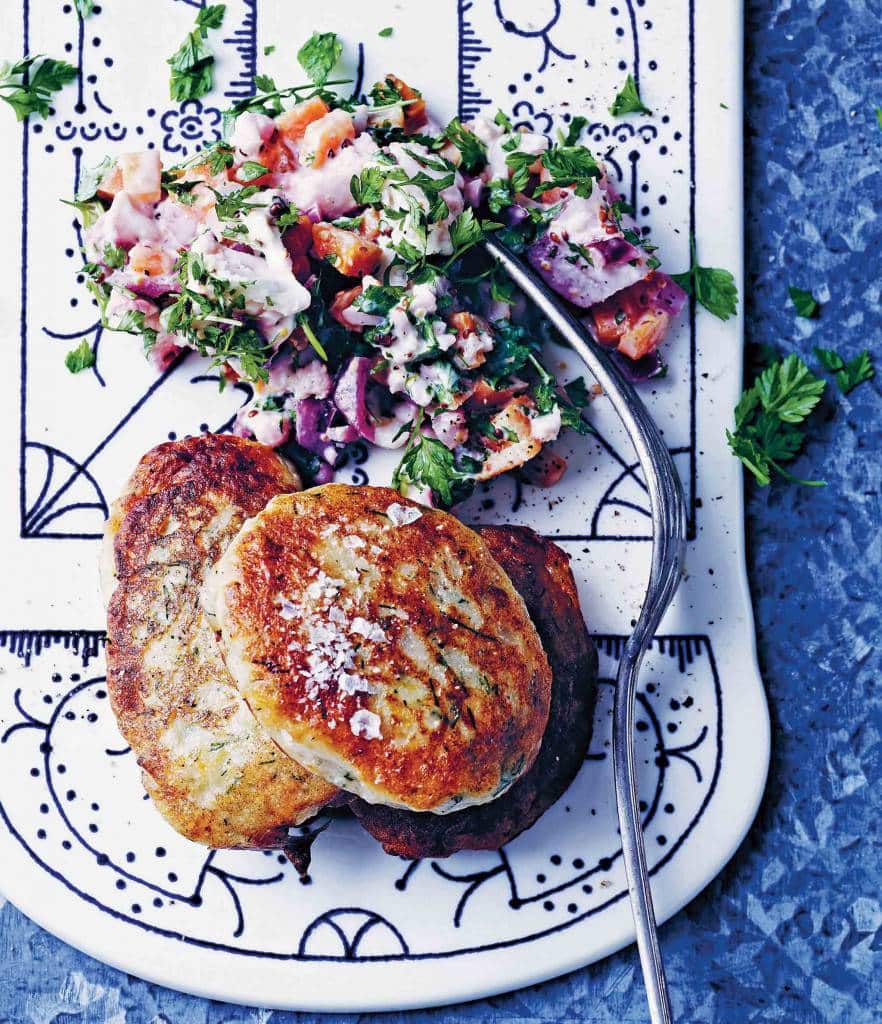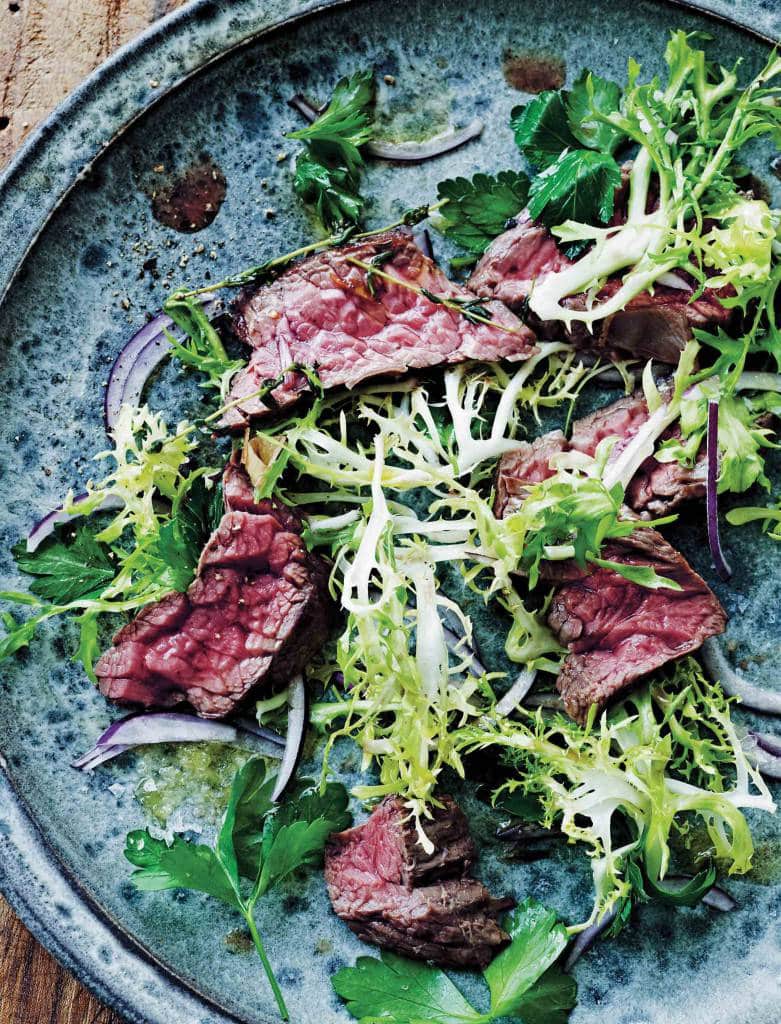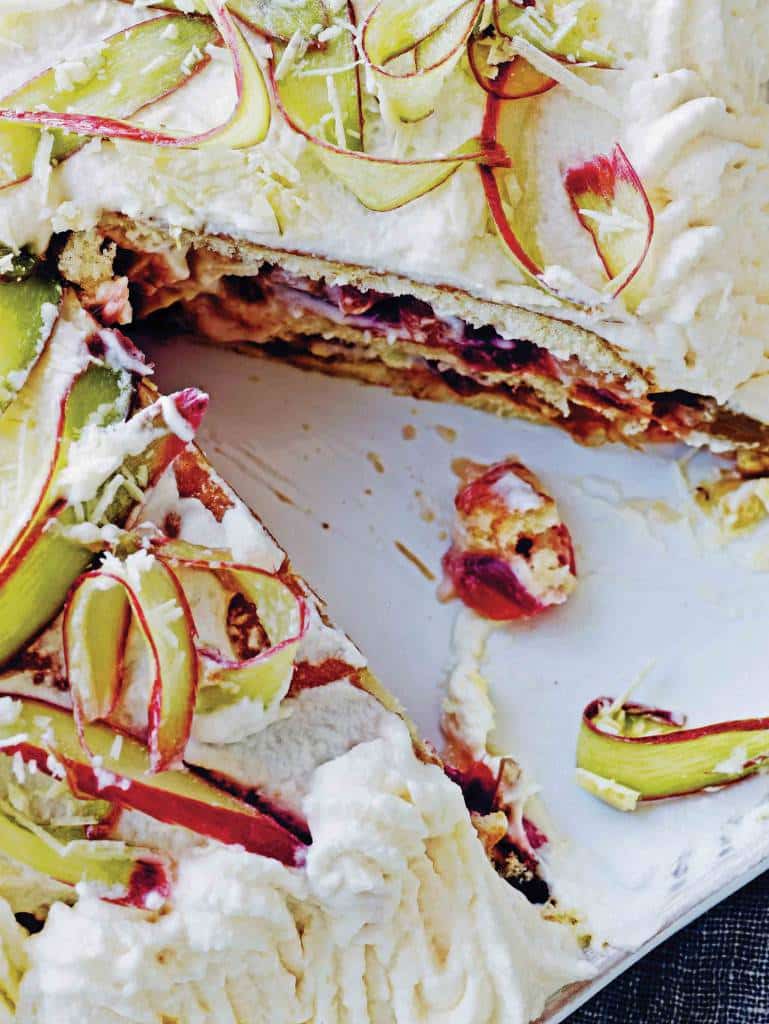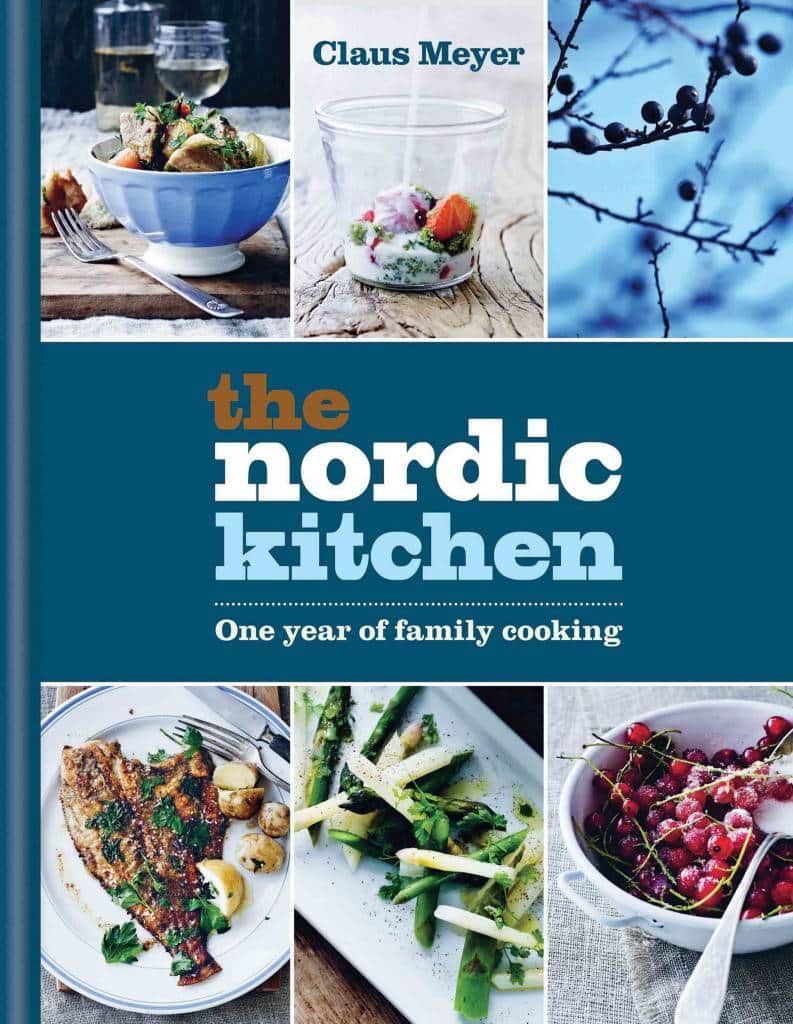Having run what most top chefs consider to be the world’s best restaurant, Noma in Copenhagen, since 2004, and spearheaded the Nordic cuisine movement worldwide, the dynamic Dane Claus Meyer certainly knows a thing or two about impressing your tastebuds – and guests should you be entertaining any time soon.
Now based in New York, where he is opening a Nordic brasserie and food hall in Manhattan’s Grand Central Station, he continues to trailblaze but also understands the importance of how food can be delicious and simple to prepare if you have the right flavours and good quality ingredients in the mix.
“I consider my food, or any food, like a draft – people should not be afraid to change the recipes slightly, and they should definitely season it so it works for them,” he says. “Seasoning food is very important, chopping up things and putting them in a salad bowl is so easy, but getting the dressing right? It’s so important.”
Have a go at some of his signature dishes featured here and see what makes him such a gastro force to be reckoned with…

FISHCAKES WITH TARTARE SAUCE
Makes:
4
What you need:
600g skinless cod or haddock fillet
1tsp sea salt
2 eggs
2tbsp plain flour
150ml whipping cream
1 carrot
1 baking potato
1/2 handful of dill, chopped
Freshly ground white pepper
10g butter
1tbsp rapeseed oil
Boiled potatoes or good rye bread, plus salad and tartare sauce, to serve
What you do:
Put the fish in a food processor and mince coarsely. Add the salt and pulse the minced fish until it is sticky. Place the fish in a mixing bowl.
Add the eggs, flour and then the cream, a little at a time, and stir well until the minced mixture has a good, firm consistency.
Peel the carrot and potato and grate them finely. Squeeze the moisture out of the vegetables with your hands and stir them into the fishcake mixture. Finally, add the chopped dill and white pepper. Refrigerate the mixture for 30 minutes before frying.
Fry large spoonfuls of the mixture in the butter and oil over a medium heat – it is important to be patient so that they form a beautiful crust on the underside before you turn them.
Serve with boiled potatoes or good rye bread, as well as a green or more rustic salad, and a generous dollop of tartare sauce.

SEARED HANGER STEAK WITH FRISÉE LETTUCE
Serves:
4, or 6 as a starter
What you need:
600g hanger steak (available from
your butcher, see tip below)
10 thyme sprigs, chopped
2tbsp olive oil
Sea salt flakes and freshly ground pepper
1 frisée lettuce (or similar
curly-leafed lettuce)
1/2 handful of parsley
1 small red onion
2tbsp cider vinegar
2tbsp cold-pressed rapeseed oil
What you do:
Remove the largest tendons and membranes from the hanger steak and rub the meat with the chopped thyme, olive oil, salt and pepper.
Heat up a griddle pan and fry the steak for a short time over a very high heat – give it two to three minutes on each
side so it’s still quite pink and juicy in the middle.
Meanwhile, cut off the root of the lettuce and divide it into large leaves. Wash the leaves and dry in a salad spinner or with a clean tea towel. Pick off the leaves from the parsley and wash and dry them as well. Peel and finely slice the red onion, then mix with the frisée and parsley.
Toss with the vinegar, rapeseed oil, salt and pepper.
Remove the meat from the pan and leave it to rest for one minute before cutting it into thin slices and serving with the salad.
Tip: Hanger steak, also known as butcher’s steak and what the French call onglet, is so called because it hangs from the diaphragm, and is located just above the kidneys. You can order hanger steak at your butcher’s, or just replace it with flank steak.

RHUBARB CAKE
Serves:
8
What you need:
For the cake layers:
4 organic eggs
125g sugar
150g plain flour
1tsp baking powder
Butter, for greasing
For the rhubarb compote:
300g rhubarb stalks
150g unrefined cane sugar
1 handful of lemon balm (a plant similar to mint, which can be
found growing wild – or you
can leave this out)
1/2 vanilla pod
To assemble:
50g blanched almonds
50g white chocolate, plus extra shavings to decorate
500ml whipping cream
1 rhubarb stalk
A little sugar, for sprinkling
What you do:
First, make the cake layers. Beat the eggs and sugar together in a bowl until pale and foamy.
Mix the flour and baking powder together and sift into the batter, then fold in gently with a spatula.
Grease a springform cake tin (about 22cm in diameter) with butter and pour in the cake batter. Bake the cake in the centre of a preheated oven at
200 °C/Gas Mark 6 for about 30 minutes. Remove the cake from the oven and leave to cool in the tin on a wire rack. When the cake is completely cool, carefully cut horizontally into three equal layers with a sharp knife.
Now cook the compote. Cut off the tops and bottoms of the rhubarb stalks, but be careful not to remove the white ‘foot’ of the stalk, which is where the rhubarb flavour is most concentrated and best. Rinse the stalks in cold water, cut into 1-2cm pieces and put in an ovenproof dish with the lemon balm. Split the vanilla pod lengthways, scrape out the seeds and mix with a little of the sugar, making them easier to distribute in the dish. Mix the vanilla sugar into the rest of the sugar, then sprinkle over the rhubarb. Stir well and add the pod to the dish.
Bake in a preheated oven at 150 °C/Gas Mark 2 for 15-20 minutes until the rhubarb is tender but still has a firm bite. Remove the dish from the oven and leave the compote to cool completely.
Chop the almonds and white chocolate roughly. Whip the cream, set half aside for decoration and gently fold the almonds and chocolate into the other half. Add the rhubarb compote and fold in.
Assemble the cake with the flavoured whipped cream between each layer, and finish by decorating it with the pure whipped cream – for the best effect, use a piping bag. Another decorative trick is to create rhubarb shavings by running a vegetable peeler lengthways along a rhubarb stalk. Toss the shavings with a little sugar before scattering over the cake, and finish with shavings of white chocolate.

Recipes taken from The Nordic Kitchen: One Year Of Family Cooking by Claus Meyer, published by Mitchell Beazley, priced £25. Available from all good bookshops








